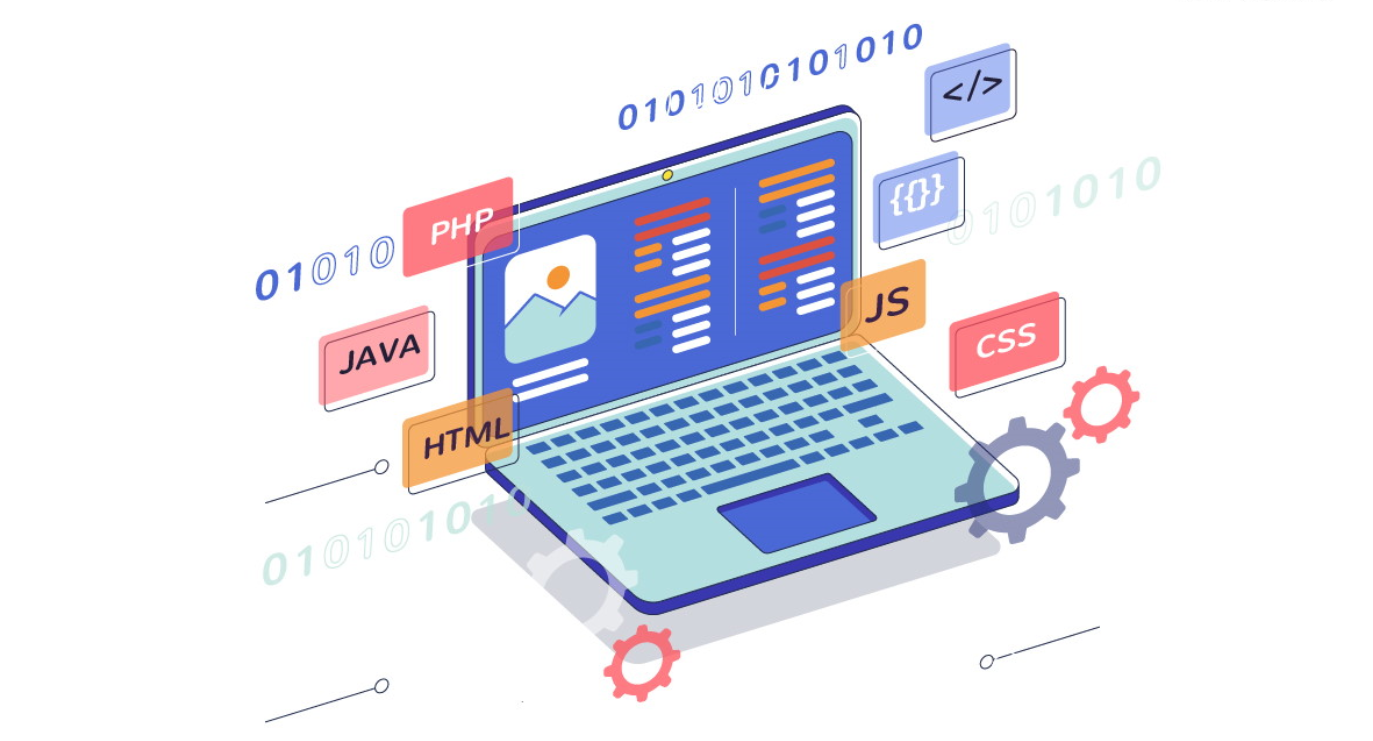Latest software development standards in 2024

Standards are essential in today's software development to guarantee quality, consistency, and scalability. They create a standard guideline and framework for development teams to adhere to, ensuring that platform engineers construct projects efficiently in compliance with the organization's standards. Furthermore, these software development standards provide developers with assurance and flexibility to work more effectively within a clearly outlined structure that encourages teamwork and the creation of top-notch software.
This article will examine software development standards, best practices for software development, and tools to assist in implementing these principles.
Software development standards
Software development standards offer guidelines and best practices for software development. The standards establish a uniform method for software development to guarantee consistency, reliability, and efficiency in the process. Here are some software development standards that DevOps professionals should know.
Tracking bugs and managing issues
Bug tracking and issue management standards are guidelines and practices established to handle bugs and issues in software development projects properly. Although there is no universally required tool, businesses can establish a consistent method for tracking bugs and managing issues by choosing solutions that suit their needs and processes.
The standards can specify the recommended methods for recording and monitoring defects, such as utilizing specialized bug-tracking systems or issue management platforms. The document may also outline procedures for prioritizing and delegating activities, developing effective communication channels, and monitoring the advancement of issue resolution.
Common bug-tracking and issue-management applications in software development are Jira, Trello, and Asana. The selection of tools is various, based on the organization's requirements and preferences. It is crucial to establish a consistent strategy that all development teams consistently follow to ensure effective bug tracking and problem management.
Coding conventions and stylistic standards
Adhering to code formatting and style requirements is crucial for guaranteeing code readability and maintainability. The rules establish the organization of code, specifying indentation, space, and naming conventions.
Developers must follow established criteria for code layout, which encompass spacing, indentation, naming conventions, and commenting. This may involve utilizing well-known style guides like Google's Style Guide or Airbnb's JavaScript Style Guide.
Secure coding techniques
Securing coding techniques is crucial for mitigating security risks in software. These practices involve using secure coding approaches like input validation and adequate error handling, and staying current with the latest security updates and fixes.
Documentation
This is crucial for assuring the maintainability and scalability of software. An effective documentation should cover details about the software's functionality, usage instructions, and customization guidelines. This is advantageous for developers who are inexperienced with the project or require modifications to the code.
Ensuring adherence to software development standards
Adhering to software development standards is essential, but it's necessary to acknowledge that these standards can be abused. Establishing impractical benchmarks, like achieving 100% code coverage, can hinder progress and lead to wasteful allocation of time and resources in testing.
One such instance of how standards might be misused is by requiring an overly abundant number of code comments. Although documentation and comments are beneficial for comprehending code, enforcing a strict rule that mandates a comment for each function or line of code, irrespective of its complexity or readability, may result in inflated and disorganized codebases. Developers could spend an inordinate amount of effort creating and upkeeping comments that do not greatly enhance comprehension of the code.
It is necessary to establish rational criteria that strike a compromise between the requirement for excellence and the requirement for effectiveness.
Advantages of software development standards
Consistency is promoted in coding styles, naming conventions, and general code structure through the use of standards. This facilitates cooperation among developers and improves code readability, therefore simplifying the process of understanding and working with each other's code team members.
- Quality: Standards ensure developers construct software consistently and predictably, minimizing the likelihood of bugs, security vulnerabilities, and other flaws.
- Scalability is enhanced by standards, which establish a structure for software development processes, facilitating the expansion of development activities as required.
- Enhanced communication: Standards establish a shared vocabulary and methodology for software development, facilitating better communication among developers.
- Reduced technical debt: Enforcing consistent standards improves code quality and maintainability, hence reducing technical debt. This minimizes the time and effort needed to implement modifications or include new functionalities in the software.
>>> Explore 10 types of software development - Latest guide in 2024
9 optimal strategies in software development
Developers should adhere to best practices in addition to setting software development standards. These recommended practices can ensure the software is built consistently and reliably. Several best practices are outlined in the following sections.
1. Employ automated testing and ensure test coverage.
Automated testing is the utilization of tools to execute a predetermined series of tests automatically. This method aids in early issue identification during the development process, ensuring that flaws are detected and resolved prior to product deployment.
Test coverage assesses the degree to which the code has been tested. Developers can increase their confidence in the reliability of their code and minimize the likelihood of future difficulties by achieving a high level of test coverage.
2. Simplify code complexity
Code complexity refers to the level of difficulty in comprehending, altering, or upkeeping code. Developers can enhance code efficiency, readability, and error prevention by simplifying code complexity.
By utilizing code quality tools such as linters and static code analysis, you can pinpoint sections of code that are too intricate and implement enhancements.
3. Conduct code reviews
Code reviews are a crucial component of the software development process. They offer a chance for additional developers to examine the code and provide suggestions.
Code reviews entail team members examining each other's code to verify that it complies with coding standards and best practices. This method aids in fault identification and enhances code quality, uniformity, and maintainability.
4. Implement in incremental increments
Small deployments entail dividing significant changes into smaller, gradual updates and deploying them often. This can assist in mitigating the danger of introducing major flaws and facilitate the process of reverting changes if needed.
5. Implement feature flags
Utilizing feature flags can mitigate the risk associated with implementing new features in a production environment. Developers can test new features by enabling them for a subset of users before making them available to everyone.
6. Utilize continuous integration and deployment
Utilizing continuous integration and continuous deployment (CI/CD) helps guarantee consistent and dependable software development and deployment. Automating the build, test, and deployment process allows developers to ensure that changes are tested and distributed rapidly and effectively.
Utilize a CI/CD pipeline to automate testing and enhance the speed and efficiency of the development process.
7. Employ version control
Utilize a version control system such as Git to monitor code modifications and work together with fellow developers. This method simplifies the process of reverting changes, working together on code, and monitoring advancement.
8. Implement agile approaches
Agile techniques prioritize collaboration, adaptability, and iterative development. Agile approaches encompass scrum, kanban, and extreme programming.
9. Highlight the ownership of software
Promote a culture of ownership, where developers assume responsibility for the product they create and are dedicated to its success. This can promote a feeling of pride and responsibility, resulting in better-quality products and more committed teams.
Tools for adhering to optimal methods
Various technologies are accessible to assist developers in following software development standards and best practices.
Monitoring tools
Observability technologies offer immediate monitoring and insight into applications and infrastructure. These technologies aid teams in promptly identifying and analyzing concerns, enabling them to react and address problems more rapidly. Common observability tools are Datadog, Dynatrace, and Grafana.
Static code analysis tools
Code analysis tools are created to assist teams in enhancing the quality and security of their code. These tools assist in detecting possible weaknesses, enforcing coding guidelines, and providing analysis on code efficiency. Common code analysis tools are SonarQube, Snyk, Lacework, and Codacy.
Tools for project management
Project management solutions facilitate team collaboration on tasks and projects, enabling the assignment and tracking of issues and progress. Common project management software are Jira, Rally, and Asana.
Continuous Integration/Continuous Deployment tools
CI/CD solutions assist teams in automating the software delivery process. They offer automated builds, testing, and deployment services to speed up the development process and enhance the software's quality. GitLab and Jenkins are CI/CD systems that provide comprehensive automation features.
Git utilities
Git technologies facilitate code repository management and code collaboration for teams. They offer functionalities like version control, branching, and merging to enhance team collaboration and productivity. Common Git tools comprise GitHub, GitLab, and Bitbucket.
Last thought
Software development standards are important for every single development step. Developers should keep them in mind for the best working process and productivity. In Axalize software development service, we commit to strictly following the standards and security policy. With a team of knowledgeable and experienced developers, we will bring you the optimal IT solutions.


